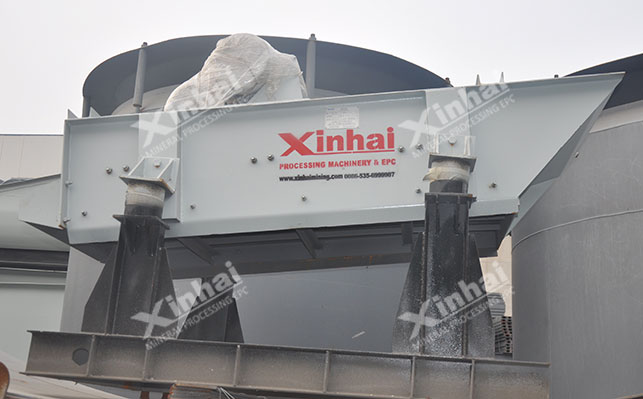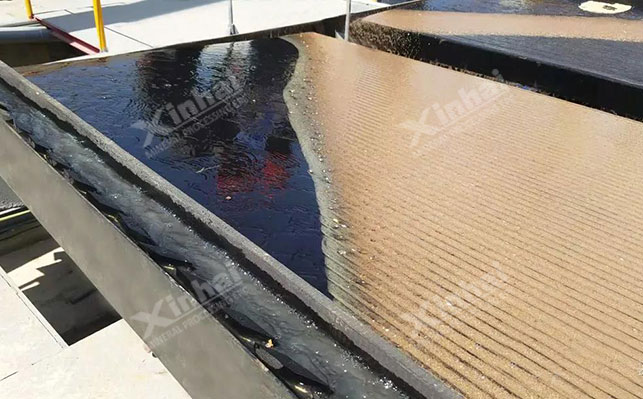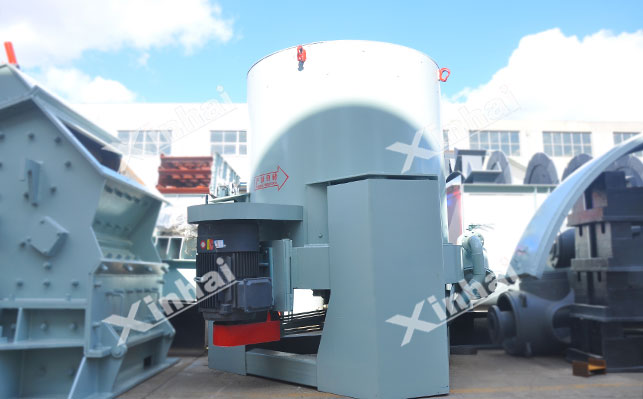
15311826613
Click to add WeChatThis year, the revised Mining Act of Papua New Guinea strictly restricts foreign investment in gold placer mining, allowing only citizens of the country to engage in the industry, while encouraging foreign investment to enter the market through large-scale mining projects. The introduction of this policy has once again pushed gold placer to a fever. In this article, we will focus on gold placer and learn about the process of gold placer beneficiation!
The target ore of gold placer is natural gold, which often exists in a free form. In addition, it is often accompanied by heavy minerals such as ilmenite, zircon, magnetite, and gangue minerals such as quartz, feldspar, and clay. However, there is a significant difference in particle size between it and other gangue minerals, so re-selection is often used as the main beneficiation method. Its principle process usually adopts: washing-screening-gravity enrichment-selection recovery process.
The main purpose of gold placer washing is to strip the clay from the gold particles, so as to prevent the gold particles from being lost with waste rock during the subsequent sorting process, thereby increasing the gold recovery rate. Commonly used ore washing equipment includes vibrating screens and drum washers.

Vibrating screen: Through high-frequency vibration, the ore is fully contacted with the water flow, and the clay is dispersed and washed away;
Drum washers: The spiral blades on the inner wall of the cylinder push the ore forward, and at the same time use water flow to wash to achieve the separation of clay and ore.
In practical applications, for placer gold mines with high clay content, a multi-stage washing process is often used to ensure the washing effect.
The main purpose of placer gold screening is to remove large pieces of waste rock and make the particle size of the material entering the subsequent sorting process more uniform. The sieve size is usually set to 10-20mm, which can effectively remove large pieces of waste rock and ensure that gold particles are not over-screened. The commonly used equipment is mainly a drum screen, which rolls and screens the material in the drum through rotation, and separates the material that meets the particle size requirements and enters the next link.
In high-grade mining areas, some companies will use double-layer screens (20mm coarse screen on the upper layer and 10mm fine screen on the lower layer) to achieve accurate particle size classification.
Jig gold selection: It is suitable for processing coarse gold placer with a size of >3mm. The mineral stratification is achieved through vertical pulsating water flow. The rising water flow makes the ore particle group loosely suspended, and the gangue with a small specific gravity floats quickly; when the water flow descends, the ore particle group settles tightly, and the gold particles sink quickly to the bottom layer and are discharged through the discharge port. By adjusting the jigger's stroke, stroke times, and water flow rate, the gold particles can be effectively separated from other minerals.

Shaking table gold selection: It has a good enrichment effect for gold particles of 0.019-3mm, but the processing volume is relatively small. The shaking table bed structure and differential motion mode are used to make the ore particles be divided into zones on the bed according to density and particle size. The gold particles move to the concentrate end, and the gangue is discharged to the tailings end. By adjusting parameters such as bed slope, stroke, number of strokes and lateral water flow speed, the sorting effect can be optimized to achieve efficient recovery of fine-grained gold.
Chute gold selection: suitable for fine-grained gold of 0.1-0.37mm, with a large processing capacity but a relatively low recovery rate. The difference in the flow velocity of the ore particles on the inclined trough surface is used for sorting. The gold particles with a large specific gravity settle quickly and will be deposited at the bottom of the chute, while the ore particles with a small specific gravity are discharged with the water flow. In some small-scale gold placer mining, chutes are often used to quickly enrich gold and obtain preliminary coarse concentrates.
Centrifuge gold selection: The main purpose is to enhance the sedimentation of fine-grained gold. Through the centrifugal force generated by high-speed rotation, the gold particles adhere to the drum wall and are discharged as concentrates through flushing water. The centrifuge has a high degree of automation and has a good recovery effect on fine-grained gold. It is equipped with an automatic discharge system to adjust the discharge time in real time according to the concentrate concentration to reduce manual intervention.

Amalgamation method: It uses the wettability of mercury to gold to form amalgam to achieve gold enrichment. On the amalgam plate (mercury-coated copper plate), gold and mercury contact to form amalgam when the slurry flows through, and then separate mercury and gold by distillation (temperature 356℃). However, mercury pollution is serious and has gradually been replaced by carbonaceous adsorption materials, resin gold extraction and other technologies.
Magnetic separation and electrostatic separation: The purpose is to recover the associated minerals in the gold placer. Magnetic separation is mainly for the recovery of associated magnetite, ilmenite and other minerals, and a high-gradient magnetic separator is used to enrich magnetic minerals; electrostatic separation is based on the difference in mineral conductivity, and non-magnetic heavy minerals such as rutile and zircon are recovered in a high-voltage electric field.
The above is an introduction to the principle process of gold placer gravity selection. Gold placer is often mainly gravity-selected due to its density difference, but according to different mineralization conditions and ore properties, there are also flotation, heap leaching, cyanide and other technical methods. In the actual beneficiation plant, how to choose the gold placer beneficiation process needs to be comprehensively considered in combination with the actual situation.
Xinhai has rich experience in gold ore dressing. Whether it is rock gold or placer gold, it can customize and design process solutions that meet the situation from a professional perspective, ensuring the return on investment while effectively recovering.